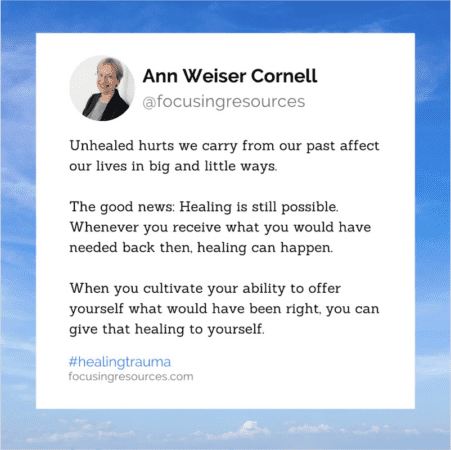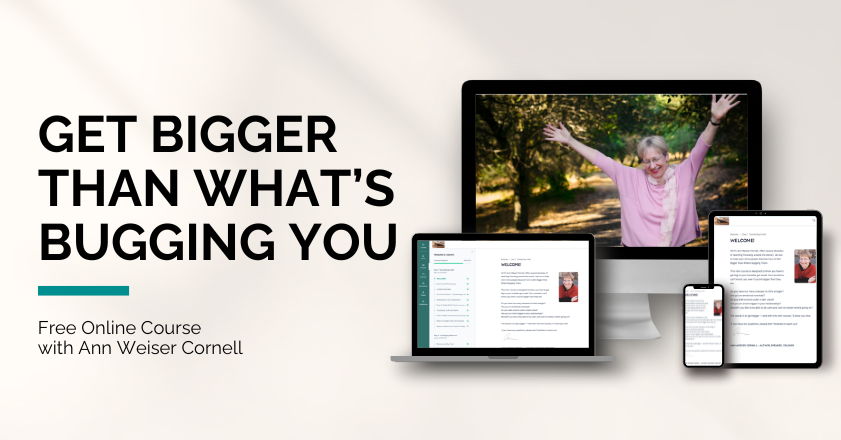Living a Focusing life means encountering each moment freshly, understanding that we have never encountered this moment and all it means ever before!
Tips for Focusing Alone
This week: the final of three ways of using art materials to support your Focusing alone. This is a nice one for people who don’t like to draw! You might have heard of this one from other contexts, it’s called Mind Mapping.
Start with one word or phrase that you want this Focusing session to be about. Then write it in the center of a white sheet of paper. (Larger paper might be better.) Sense inwardly, and as you sense further developments or other aspects of this issue, you can draw a line leading out from this central point, and write the new word or phrase in another circle. This let’s you be non-linear, and spread out over the whole paper if you want to, following what feels right.
This doesn’t have to be done with colored pens or crayons but I think choosing the color that fits can enhance the experience as well… and even choosing the size or style of the words written.
Like the one last week, this method is from an article that appeared in The Focusing Connection called “Focusing Alone with Signs and Maps,” by Sue Dougherty.
Tips for Focusing with a Partner
Last week we talked about being a Focusing Companion to someone who gets images easily while Focusing. What about someone who seems to be getting distracted by thoughts?
What is called a “thought” may well be relevant to the process. To encourage the Focuser to include what comes as a thought, don’t say back the word “thought” or the word “think.” Instead, call it “something.”
Focuser: “I’m getting this thought about work.”
Companion: “You’re sensing something about work.”
This way of reflecting is a subtle invitation to the Focuser to treat what has come as a whole communication, and sense it in the body.






